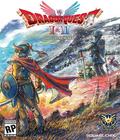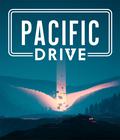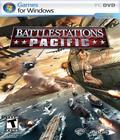Somewhat telling is that my favorite feature of Battlestations Pacific is the ability, within the game's presentation options, to turn on the graphics engine's antique color newsreel effect not only in the cut scenes but also throughout the in-game action. It's a gimmick befitting consoles, not unlike the way Killzone 2 used depth of field and creative camera focus to produce a far more cinematic experience than would have been otherwise possible. When you've just sunk a destroyer, the cut scenes in Battlestations Pacific are designed to give you the feeling you're relishing the day's accomplishments while viewing an old WWII-era newsreel or snooping in on secret combat film shot from a bomber's belly camera. Playing the game with this visual effect turned on in all modes lets you feel like you're actually playing inside that aging newsreel. It's a strong presentation point that's not to be overlooked. Since most of us gaming today grew up understanding WWII in a visual sense via archival film presentations, the style is notably more satisfying than any amount of blinding realism. After all, at this stage in console technology, you can only get so real before the illusion degrades, and a fair bit of intentional degradation goes a long way here.
Unfortunately, these days, lauding a game purely for its graphical prowess is as often as not damning with faint praise. It usually means that it's a pretty game with little depth, but that's not the case with Battlestations Pacific — and that's both its strongest and weakest point. You expect a lot of military hardware, and you get it, though you'll have to put in the hours to unlock much of the more interesting material. The game is also stuffed with missions in two complete single-player campaigns.
As the game's subtitle implies, the campaigns are the U.S. and Japanese naval actions in WWII. There are battles and missions based on both historical and fictional scenarios; sometimes your victory — or defeat — in an earlier mission influences the outcome of Pacific operations enough so you're cast as the defending or aggressing force in a completely hypothetical battle. There's nothing new here in malleable chronology, but Battlestations certainly skirts the stock problem with many WWII-era games because you're either confined to one long historical operation with an ultimate no-fail clause, or you're fighting the same battles over and over again, winning and losing ad infinitum, with no particularly great consequences of those outcomes. Battlestations does indeed let you change history, win or lose. But, then again, changing history, or retelling history, is standard fare in narrative video game design.
To a great degree, Battlestations Pacific tries to be all things to all people, insofar as all those things are WWII military activities. Whether you're a flier or a sailor, your preferred armaments are here. And if you're both, the game also favors master tacticians, allowing you to deploy and order around both unit types. There's great depth here, too, enabling gamers not only to move units about, but also initiate defensive stances, aggressive stances and the like. Further, you have hands-on control of your varied units, with the ability to switch from the cockpit of a barrel-rolling, dive-bombing Zero to the tense gunner's seat in a nearby destroyer — albeit from a top-down view of the ship.
It's nice to play as the whole bunch, rather than playing in a squadron or convoy, so you may virtually hop out of a downed plane into a more serviceable one. This dynamic approach to battle works with varying degrees of success, although it will strongly appeal to console gamers who, by virtue of indoctrination in the legions of console military titles, FPS and otherwise, expect to do the moving and shooting by themselves. All this flexibility certainly requires mastering and remembering a wide range of controller functions, some of which, as you'd expect, perform only vaguely similar functions between units.
For me, that was the widest chink in Battlestations Pacific's armor: Having enough trouble piloting a submarine around, diving to avoid incoming artillery, running at periscope depth to align my torpedo firings, surfacing to fire back with my own deck cannons, then quickly having to adjust to sky instead of sea, recall stalling is now the problem rather than excessive speed, and on top of that minding my maps and overall assault strategy, I felt rather more submersed than immersed. I felt a lot like I'd prefer the strat-game standbys of a mouse and keyboard, even if those implements occasional falter in more immediate actions, especially when it gets down to performing functions like specific repairs or supplying naval units.
Considering all its trying to do, Battlestations Pacific's controls are well-designed and generally work as you'd expect. (I'll never understand why the Y-axis isn't inverted by default in the flight controls, but you can change that a couple of seconds after you discover you'll never keep a plane in the air with the standard settings.) I found flying to be a rather smooth, enjoyable experience, and the prospect of shooting oncoming fighters out of the sky, even on the campaign's most difficult setting, wasn't too daunting. But there were other things, like piloting those subs, that I never quite got the hang of. No matter how much practice I put in, I'd never be completely comfortable with some of aspects of that hands-on control. The underwater views aren't great either; for navigational purposes, they're actually a bit poor, but then again you don't generally navigate a submerged submarine looking out a porthole, either.
Audio is solid, if a little soft, perhaps a bit too realistically modest. I'd prefer a little more weaponized Sturm und Drang pounding in my ears in the heat of battle. Battlestations is really not the typical over-the-top shooter, but sound effects and audio are becoming more and more important in console titles as the graphics scales tend to balance. Voice-over work is capable, and the radio announcements seem authentic, if sometimes not particularly informative about what's up at the moment. Voice acting in the cut scenes is fine, though the narrative campaign cut scenes themselves feel more than a bit gimmicky, merely a way to force a plot structure onto what is most clearly a strategy/action hybrid title.
Battlestations comes complete with a two- to eight-participant multiplayer mode. There are multiple game modes, including Island Capture, a new item not found in the game's predecessor. Duel is a great way to carry out online dogfights, or, even more interesting in my opinion, naval hunts with one sub tracking down another. Tidbits like this are well-conceived and increase the fun factor quite a bit. What dampens the joy here is the sheer amount of time you'll have to put into Battlestations Pacific to be anywhere near good enough to capably take on randomly matched opponents — people who've either mastered the title's predecessor or have seemingly infinite time to practice on the new game. Sure you can play with friends who've only just picked up the game, or only have so much time for it, but potential online warriors should be wary. In some ways, Battlestations reminds of an old Xbox title, Tom Clancy's Splinter Cell: Pandora Tomorrow: completely different genres, but likewise, go into Pandora Tomorrow online matches unprepared, you were useless to yourself, your teammate and, in general, humanity. Now that was a way to be shamed. But Battlestations also features a Skirmish mode, allowing practice on all the multiplayer maps against AI opponents, if you've got the time.
Despite some high marks for depth, competency, controls (given the circumstances), and a general feel of polished design work throughout, Battlestations Pacific simply tasted a bit stale. It's a definite improvement over Battlestations Midway, and I'll wager anyone who loved that game will have little problem embracing this one, though it may ultimately feel like a heavily updated and upgraded expansion pack set in a different operational theater. If you find yourself playing strategy titles and wishing you could actually fly those units and fire those heavy weapons, and then you play flight sims and similar action titles feeling a bit like you never get a good look at the big picture, Battlestations may well be for you. It's the kind of historical military game that was enormously popular on PC for years, but do recall the size of the manuals that came with those games. Battlestations Pacific's documentation is trimmed to barely longer than the usual console guide, but, Commander, you still have a lot to learn before you can call yourself steady at the helm.
Score: 7.0/10
More articles about Battlestations: Pacific











 Battlestations: Pacific features a massive U.S. and Japanese single player campaign that offers a unique blend of action and strategy. Players must plan their moves carefully on huge open-world arenas and fight in the air, above sea and underwater to relive some of the most hard-fought battles in WWII history. With the newly added Japanese faction, players will also gain insight into what could have been, should Japan have gained the upper hand against the United States. Battlestations: Pacific also features five new innovative multiplayer modes to strategically plan and battle against friends with all new maps and units.
Battlestations: Pacific features a massive U.S. and Japanese single player campaign that offers a unique blend of action and strategy. Players must plan their moves carefully on huge open-world arenas and fight in the air, above sea and underwater to relive some of the most hard-fought battles in WWII history. With the newly added Japanese faction, players will also gain insight into what could have been, should Japan have gained the upper hand against the United States. Battlestations: Pacific also features five new innovative multiplayer modes to strategically plan and battle against friends with all new maps and units.










































